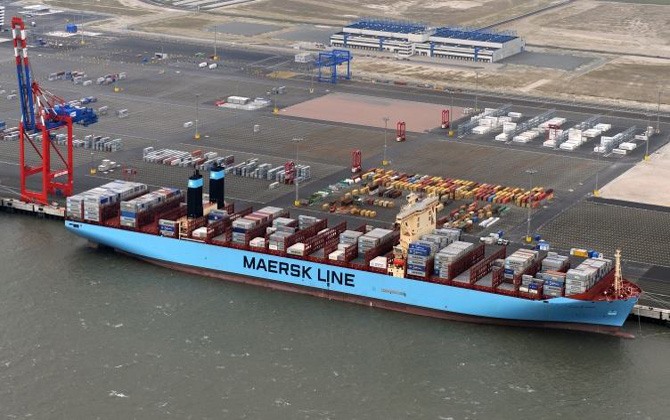
With the reopening of the port of Shanghai and the upcoming peak season, a wave of imported containers is expected, and it is worrying that container port hubs in northern Europe remain heavily congested. During the recent two-month blockade of Shanghai, as carriers cancelled a third of their voyages, a large number of empty containers and hundreds of frustrated export boxes piled up at major hubs in northern Europe. In addition, these ports have used much of their off-dock overflow capacity to store thousands of containers bound for Russia that have been blocked by customs on a long-term basis. One industry insider said of the congestion in Hamburg that the city's port "sits on a big pile of export containers". He added: "German industry still works on a seven-day schedule, but ships arrive every nine to 12 days. That's the equivalent of one flight going missing every four to five weeks and the terminals are full." This also applies to warehouses and storage areas in and around the Port of Hamburg, he noted. In a market update this week, Maersk said its network was "under significant pressure," blaming "operational disruptions at European ports." "Our ships experienced delays in Northern Europe, which impacted the timetable for return to the Asia-Pacific region," the carrier said. It said terminals in the ports of Rotterdam and Bremerhaven are currently the "most congested," resulting in "long" berth wait times and slow ship work efficiency. At the same time, Hapag-Lloyd's customer advisory said that yard occupancy at Hamburg container terminal Altenwerder (CTA) was at 90 percent, "mainly due to lower unloading and import pick-up rates for imported heavy vessels." "Due to high yard utilization, cold storage tanks are used to store dry boxes, in return limiting the maximum number of cold storage plugs available," Hapag-Lloyd warned. Elsewhere, at PSA's Antwerp terminal, Hapag-Lloyd said yard utilization was back to 90 percent for 869 berths, reefer utilization continued at 100 percent for 913 berths, and reefer containers were stacked in three tiers. In the neighboring port of Rotterdam, Hapag-Lloyd is experiencing similar congestion problems to its Danish rivals. It said yard density at the Rotterdam World Gateway (RWG) had "deteriorated" to 95 per cent due to "increased container dwell times and Russian cargoes from different carriers", while it suggested that at ECT, density levels had increased to 96 per cent, attributed to "long stays of transit and import cargoes blocking tanks". The severe congestion affecting the Benelux hub is bad news for barge operators, with Antwerp apparently halting all barge operations until June 30. Feeder operators are also suffering huge berthing delays at their Nordic hubs. A feeder operator contact told The Loadstar that vessels on the route typically wait four to five days after arriving at ports in Rotterdam and Antwerp, making scheduling impossible. "We used to easily send a ship Rotterdam-Dublin-Rotterdam in six days; We now need to plan for nine days, "he said. "That means we need to deploy more vessels on the butterfly ring to maintain some sort of fixed day service."